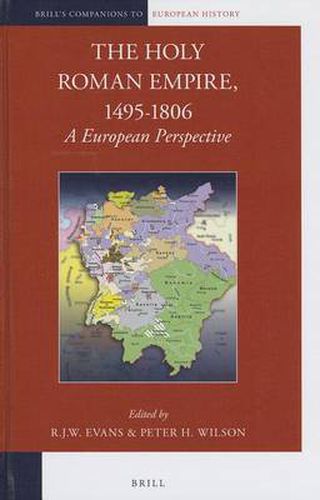Readings Newsletter
Become a Readings Member to make your shopping experience even easier.
Sign in or sign up for free!
You’re not far away from qualifying for FREE standard shipping within Australia
You’ve qualified for FREE standard shipping within Australia
The cart is loading…






In the early modern period the Holy Roman Empire, or Reich, was one of the oldest and largest European states. Its importance was magnified by its location at the heart of the continent, by the extensive international connections of its leading families, and by the involvement of foreign rulers in its governance. This book breaks new ground in its collective exploration of aspects of cross-border and transnational interaction, and of political and diplomatic, social and cultural relations. There are essays on important turning-points, especially 1648 and 1806; on the patterns of rulership of the emperors themselves; on areas which lay on the margin of the Reich; on neighbouring countries which interacted with the Empire; and on visual and material culture. Contributors are Wolfgang Burgdorf, Olivier Chaline, Heinz Duchhardt, Jeroen Duindam, Robert Evans, Sven Externbrink, Robert Frost, Lothar Hoebelt, Thomas DaCosta Kaufmann, Petr Mat'a, Nicolette Mout, Thomas Munck, Geza Palffy, Jaroslav Panek, Adam Perlakowski, Friedrich Polleross, Blythe Alice Raviola. Peter Schroeder, Kim Siebenhuner, Peter H. Wilson and Thomas Winkelbauer.
$9.00 standard shipping within Australia
FREE standard shipping within Australia for orders over $100.00
Express & International shipping calculated at checkout
In the early modern period the Holy Roman Empire, or Reich, was one of the oldest and largest European states. Its importance was magnified by its location at the heart of the continent, by the extensive international connections of its leading families, and by the involvement of foreign rulers in its governance. This book breaks new ground in its collective exploration of aspects of cross-border and transnational interaction, and of political and diplomatic, social and cultural relations. There are essays on important turning-points, especially 1648 and 1806; on the patterns of rulership of the emperors themselves; on areas which lay on the margin of the Reich; on neighbouring countries which interacted with the Empire; and on visual and material culture. Contributors are Wolfgang Burgdorf, Olivier Chaline, Heinz Duchhardt, Jeroen Duindam, Robert Evans, Sven Externbrink, Robert Frost, Lothar Hoebelt, Thomas DaCosta Kaufmann, Petr Mat'a, Nicolette Mout, Thomas Munck, Geza Palffy, Jaroslav Panek, Adam Perlakowski, Friedrich Polleross, Blythe Alice Raviola. Peter Schroeder, Kim Siebenhuner, Peter H. Wilson and Thomas Winkelbauer.